Buffalo MiniStation Thunderbolt Review - An External with USB 3.0 and Thunderbolt
by Brian Klug on August 1, 2012 4:04 PM EST- Posted in
- Storage
- SSDs
- USB 3.0
- Thunderbolt
- Buffalo
Part of what makes the Buffalo MiniStation Thunderbolt unique is the inclusion of USB 3.0 alongside, well, Thunderbolt. Going with a Thunderbolt only drive is admittedly a difficult prospect to swallow - what happens if your only Thunderbolt-packing computer dies, for example, and you need files on the drive? Having legacy interfaces is just something everyone has grown accustomed to, and what that usually ends up meaning is that USB needs to be onboard.
Buffalo told me that they worked with Intel and Apple to develop a switching system for deciding which controller to switch SATA from the drive to, and that this system is unique to the MiniStation Thunderbolt for now. To find out more, I had to open up the drive. To be honest, well, I was always going to open the enclosure…
I wager a lot of other potential customers are interested in putting an SSD inside the MiniStation Thunderbolt and taking advantage of the interface’s basically native transfer speeds. Unfortunately, getting the MiniStation apart is somewhat challenging. Disassembly starts by prying the top plastic cover off, which is connected via plastic clips to the drive tray, which is in turn adhered to the aluminum base with some sticky double sided foam tape.
I ended up having to apply a lot of force to separate things, and for me the adhesive was what gave first while prying on the top part of the drive. Armed with this knowledge, people trying to take apart the drive assembly should probably heat the underside with a heat gun before prying the top off with a plastic opening tool. After this comes up, there are plastic clips and a few screws in your way securing the drive to a plastic cage. It’s clear the black part sits in the aluminum tray, and the top white plastic part snaps over this.
With this apart, you can separate the PCB which runs under the 2.5" HDD inside the drive. In the case of my 500 GB model, the drive is a SATA 3.0, 5400 RPM, 8 MB cache, Samsung ST500LM012. I’m not sure what the 1 TB model uses since I wasn’t sampled one, but likely the same family.
The board runs almost the full length of the HDD underside, and there’s a fair number of packages onboard. On the topside we can find the Intel DSL2210 (codename: Port Ridge) endpoint Thunderbolt controller, which is a single Thunderbolt channel, 2 PCIe device with 0.7W TDP. Port Ridge is popping up in a lot of places, for good reason - it’s inexpensive, second generation, small, and has a low TDP. What it sacrifices is pass through functionality or additional Thunderbolt channels.
At center, below the DSL2210 is an ASmedia AS1061 PCIe-1x to SATA 3.0 controller. This is clearly the controller used when the MiniStation is connected over Thunderbolt. Again, Thunderbolt basically tunnels either PCIe or DisplayPort, you need a fully fledged PCIe controller on the other side for whatever you’re connecting to.
At top left under the USB 3.0 controller is a MediaLogic MDLU03 USB 3.0 to SATA 3.0 controller, which obviously gets used when the drive is connected over USB. On this side of the board there are a few other things, like a step-down converter for Thunderbolt power, a tiny 512 Kbit flash, and three white LEDs (with pads for two more) at the bottom.
So you’re probably wondering, well, how does the device switch between the MediaLogic USB 3.0 controller and the ASmedia controller? The answer is on the other side of the PCB.
Here on the back side of the PCB there’s both an ASmedia ASM1456 SATA 3.0, 2 to 1 multiplexer/switch, and an NXP LPC1114F (PDF) microcontroller with an up to 50 MHz ARM Cortex M0 at its core. This controller undoubtably contains the management and logic which tells the switch which SATA controller to choose between. There’s also something a little bit ironic about Intel having to recommend use of an ARM Cortex M0 controller for its platform for Apple and Buffalo - it seems like making a next generation Thunderbolt controller with a tiny controller or AP of its own onboard would make a lot of sense.
There’s a ton of integration here to do what seems like a simple task, but the end result is a drive which will connect and switch between USB 3.0 and Thunderbolt and handle the edge case where someone decides to connect both at the same time. The only real next level is for future Thunerbolt controllers to offer some onboard AP purely for devices like this with multiple I/O. Maybe we’ll get a third generation Thunderbolt SKU with SATA built in, that would seem logical.
After I ran performance numbers and testing on the MiniStation with HDD inside, I disassembled the MiniStation and tossed in an OCZ Vertex 3 MAX IOPS, which works perfectly. Getting the MiniStation back together is a bit of a challenge, but not impossible - I just don’t want to do it again, and with those plastic clips and adhesive would only recommend disassembly and reassembly once. That’s the tradeoff which gets made for having a drive with no external screws.


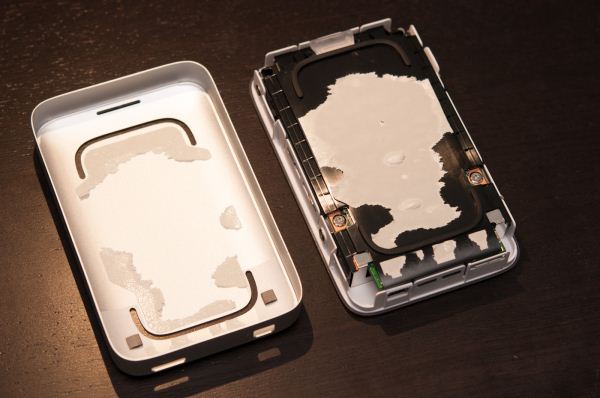

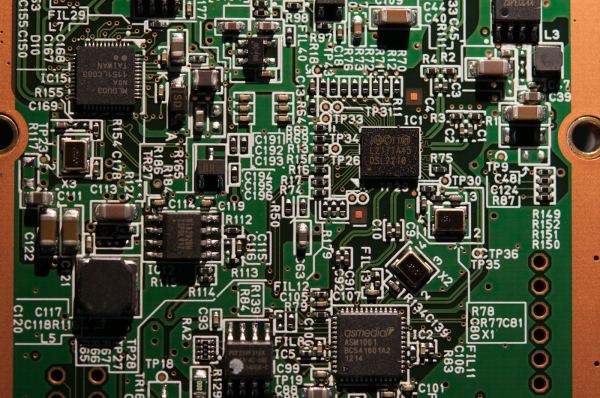
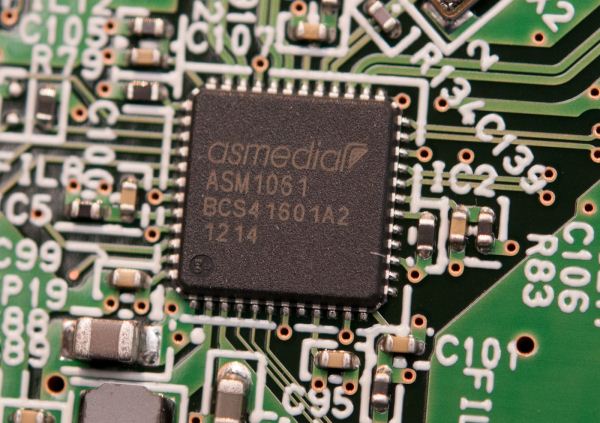
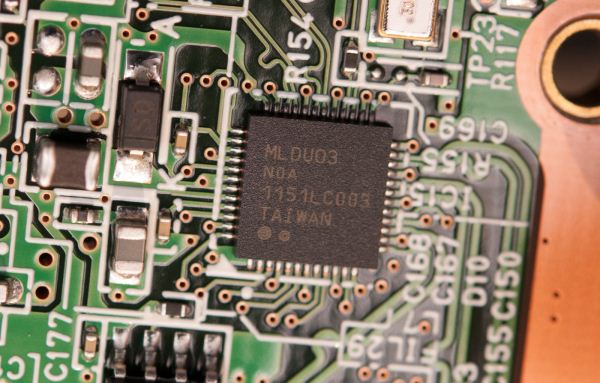
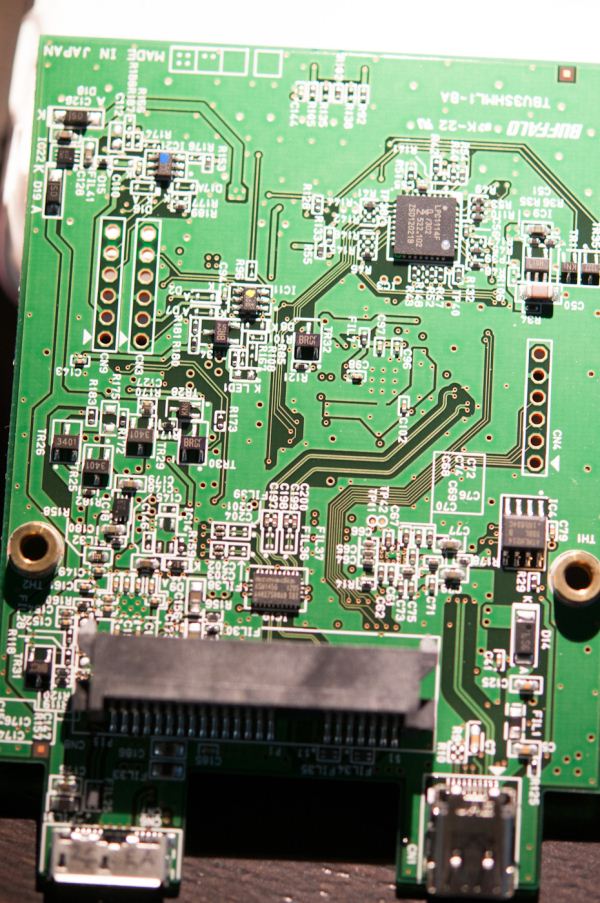















61 Comments
View All Comments
Graham. - Thursday, August 2, 2012 - link
Because USB 3.0 isn't all it's cracked up to be. It's already too slow to handle the data that a modern SATA III SSD can throw at it, let alone a multi-SSD RAID. This is where Thunderbolt really shines.AnnonymousCoward - Thursday, August 2, 2012 - link
No, sudokill has a valid question. USB3 can do up to 400MB/s throughput. The comparison did use unique SW and OS's.ssj3gohan - Thursday, August 2, 2012 - link
There is just absolutely no point to this product. It is freakishly expensive for what it does in what has become a commodity market. The design decisions that make it expensive are idiotic. Thunderbolt is a couple tens of percent faster than USB 3, but this drive doesn't even come close to saturating any interface. There is just no point.Also, it is clearly not aimed at disassembling and putting something inside that actually does benefit from the TB interface. It's cumbersome to disassemble and the device is (at least optically) internally damaged when doing so.
Who the hell thought of this and more importantly: why could Anandtech ever say it is 'an affordable price point'? Yes, it is affordable compared to a TB-carrying computer, but it's way too expensive to even consider when buying external storage (and after all, this is nothing more than external storage). It's more expensive than equally performing *wireless* hard drives! It's more expensive than buying a TB to USB 3.0 cable and any other commodity external hard drive. It's more expensive than buying a low-end NAS!
Talking about a high-margin market...
philipma1957 - Thursday, August 2, 2012 - link
Okay seagate's t-bolt adapter is 99 the cable is 50 and a usb 3 adapter is 20 so 169 gives you the ability to use 2 drives since you have a pair of adapters . so for 169 I have an endless choice of drives and the ability to use 2 of them.Of course I need to pay for drives.
this way I have a case with a slow 500gb hdd . And I have 2 ways to connect it. seems to me a lot of people would go for the seagate choice over this.
repoman27 - Thursday, August 2, 2012 - link
What driver and transfer mode was used for the USB 3.0 tests? Were you using the Windows 7 driver? The numbers would seem to indicate BOT was being used. If so, was the maximum payload size the default 64 KB? Does this device support UASP?This product really does seem to fall pretty far off of the price/performance curve. Surprisingly, there are some Thunderbolt products that aren't bad at all when you plot the cost per GB versus straight-line speed. Notably, the Western Digital My Book Thunderbolt Duo 6TB which Newegg was listing for $579.99 the other day (10.5¢/GB for 240MB/s speeds), and the Promise Pegasus R6 12TB which offers insane speeds, flexibility and good construction for less than 20 cents per GB.
This is yet another product that can only be rationalized for use with a 2011 model Mac. Every other PC with Thunderbolt also has USB 3.0, so why would you pay a premium for Thunderbolt in this case? The USB 3.0 only version of this drive is only $89.99 on Newegg right now. That's a $140 or 155% price increase for a feature that would only pay dividends on a 2011 Mac.
mattlach - Thursday, August 2, 2012 - link
I will always prefer eSATA to Thunderbolt for storage, as eSATA is native.Graham. - Thursday, August 2, 2012 - link
You don't understand. The beauty of Thunderbolt is that it is completely 'native'. Connecting a Thunderbolt drive is like connecting the drive directly to a SATA port on the motherboard. Or, in the case of a multi-bay RAID like the Pegasus it's like connecting to a hardware RAID card in to a PCIe slot. All over a single cable with no decrease in speed or added latency!mattlach - Friday, August 3, 2012 - link
Oh,That seems like it could have some neat usage scenarios then. Seems a little pricey for a simple external hard drive though, as now you'd need a separate controller in the portable unit, whereas with eSATA you are using the controller you already have on your machine.
mattlach - Friday, August 3, 2012 - link
Still think I would have prefered a further development of the Expresscard standard shrinking its size and making more PCIe lanes directly available, rather than the development of something new requiring new changes to operating systems and drivers to ensure compatibility.I wonder how long until Thunderbolt is properly supported under Linux.
Also, I have a strong distaste for proprietary formats.
munsie - Monday, August 13, 2012 - link
Even better -- since Thunderbolt looks like PCIe to the host OS, most devices just work, even under legacy OSes that were released before Thunderbolt. As long as their was already a device driver available for whatever PCIe chip is in the device, it should just work. The only thing that might not work right away is hotswap support. Since Thunderbolt devices can be plugged in and removed at any time while most machines treat PCIe as only swappable between reboots, you might have to reboot your machine if it's running an older OS.Thunderbolt and ExpressCard have more in common that you think -- both appear to the host OS as PCIe devices for the most part.
Also -- how is Thunderbolt any more proprietary than anything else? It's currently only offered by Intel, but I suspect we'll see more vendors offering chips at some point soon. Most are probably taking a wait and see approach.